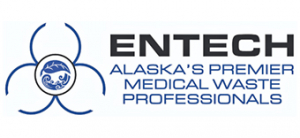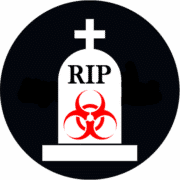In 1976, the Environmental Protection Agency (EPA) established one of the agency’s most encompassing pieces of legislation with the Resource Conservation and and Recovery Act more commonly referred to as RCRA. The legislation was formed in direct response to public outcry regarding the limited oversight of solid waste management at the time and increasing awareness of environmental issues. In 1988, the EPA instated new legislation regarding medical waste management through the Medical Waste Tracking Act which, again, was introduced largely as a result of growing public concerns regarding the management of hazardous materials. As a result of these two primary pieces of legislation, the medical waste service industry was created and the impact of this legislation carries on today through cradle to grave medical waste regulations.
The term “cradle to grave” comes from requirements established in RCRA. As a generator of RCRA hazardous wastes, which includes some specific categories of regulated medical wastes, the disposal of these wastes ultimately remains as the generator’s responsibility. Per RCRA regulation, even if a generator hire someone else to manage and complete the disposal of these materials, the generator remains liable for any failure on their part to follow the law. Hence, the term “cradle to gave” is used to communicate this responsibility.
While the vast majority of medical wastes including sharps and general biomedical wastes are not subjected to RCRA requirements, certain healthcare equipment and pharmaceuticals are. Universal wastes, including items which contain mercury, along with other specific materials with certain toxicity, corrosivity, or ignitability characteristics are regulated by RCRA. These materials require certain additional management activities to ensure full compliance with laws designed to protect both the environment and public health.
Cradle to grave also states that a generator – whether a hospital, medical spa, tattoo parlor, or veterinary practice – is responsible for its waste from the point of generation to its final destination of disposal. There are no expiration dates, no time limits, and hiring someone else to transport and dispose of your RCRA waste does not absolve the generator of this responsibility.
It’s because of these regulations like RCRA and the Medical Waste Tracking Act that service providers stress the importance of compliance and accountability with generators. Because proper packaging, labeling, and transportation of regulated medical waste is regulated by federal and state law, compliance activity should be a central consideration of choosing a provider for your practice. Even if your facility and staff follow all regulations to the letter, don’t rely on just anyone to transport and haul away your medical waste. Remember, generators retain responsibilities for medical wastes while sharing both joint and several liabilities with your providers, even when wastes leave your facility.
Ensure that your waste is disposed of properly, safely, and securely, so that you maintain compliance under the confines of applicable regulations. Contact Entech today if you would like help managing compliance at your practice while simultaneously reducing your disposal costs!



